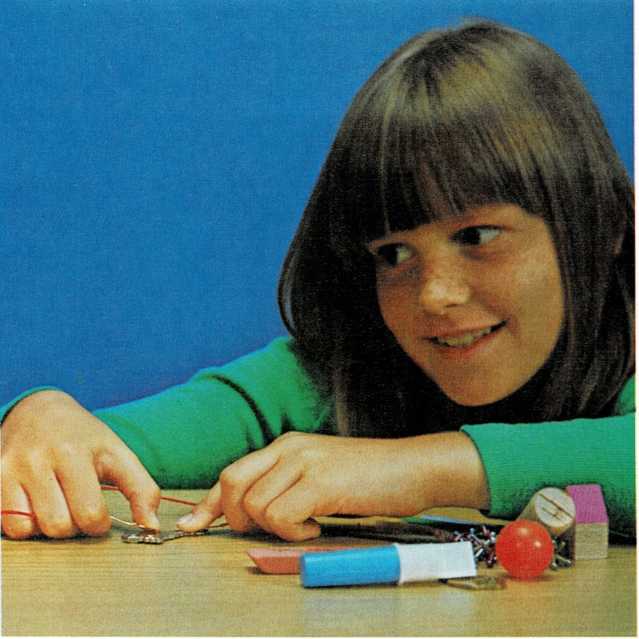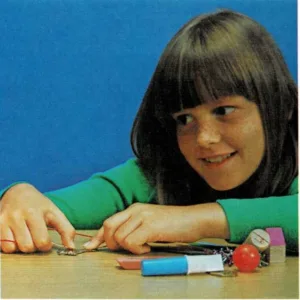Current conductors
Materials
What kinds of materials will conduct, or
bell wire (6 feet; 1.8 meters)
dry cell (No. 6)
flashlight bulb (1.5 volts)
knife
porcelain or plastic socket
(small, for flashlight bulb)
- screwdriver
carry, electricity? This safe conduction tester will help you find out.
Ask a grown-up to cut the wire in half, and then to cut one of the
pieces in half again. Now scrape about an inch (2.5 centimeters) of the
covering from the ends of the wires.
Attach the two short wires to the screws on the socket, as shown. Then
connect one short wire to a post on the battery. Connect one end of the
long wire to the other post.
Screw the bulb into the socket. Then touch the free ends of the short
and long wires together. If the bulb lights up, your conduction tester
is ready to use.

Find several kinds of material to test, such as aluminum foil, coins, a
cork, an eraser, a glass, keys, paper, pins, plastic toys, and a wooden
block. Touch the free ends of the bare wires to each sample. (Make sure
the wires don’t touch each other.) Does the bulb always light up?
Most metals are good conductors of electricity. An electric current
passes through them easily. So the bulb lights up. But materials such as
rubber, wood, and plastic are not good conductors. So when these things
are used, the bulb on your conduction tester does not light up.
Are all metal things good conductors? Do any other materials conduct
electricity? Test more samples to find out.

